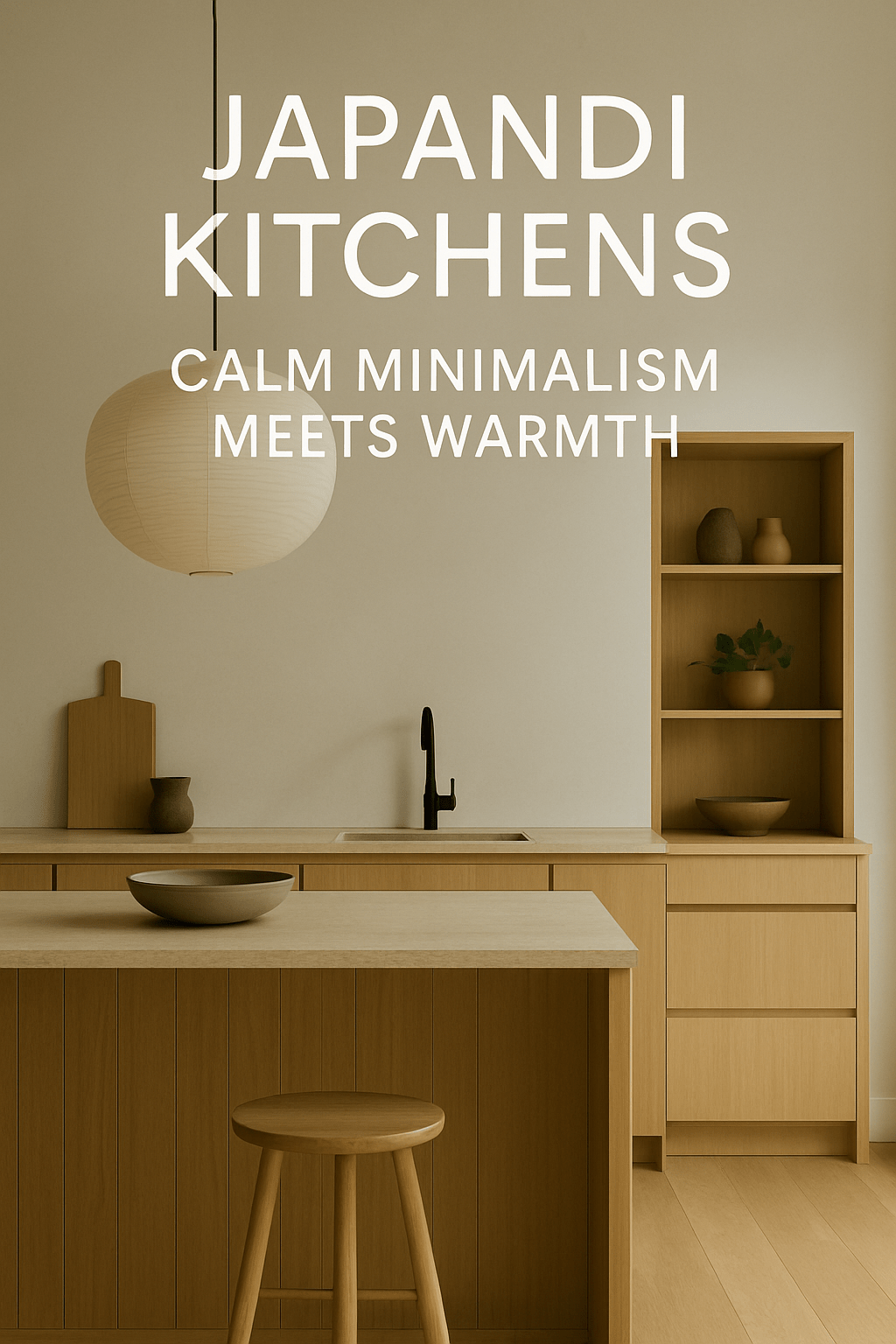
Japandi Kitchens: Calm Minimalism Meets Warmth
Share
Japandi kitchens combine Japanese minimalism with Scandinavian warmth—two design philosophies that thrive on simplicity, function, and natural materials. In 2025, this hybrid style is finding new life in modern homes, creating calm spaces that feel both contemporary and timeless.
What Makes Japandi Different?
- Balance of contrasts: Clean lines meet soft textures—sharp cabinetry balanced with natural wood.
- Light + dark harmony: Pale oak with deep charcoal cabinets is a signature Japandi pairing.
- Mindful design: A place for everything, with no excess. Learn more in our guide to sustainable kitchen design.
Key Japandi Elements for 2025
- Natural materials: Wood, stone, bamboo, and linen dominate—materials that age beautifully.
- Neutral palettes: Soft greys, warm beiges, and muted greens set the tone.
- Functional storage: Clutter-free living is central. See our hidden storage hacks for ideas.
Cabinetry Choices
- Shaker style: A simple framed door works well in muted colours. Explore our Shaker kitchens.
- Flat fronts: Handleless cabinets with wood veneers achieve the minimalist Japanese look.
- Mixed textures: Combine painted finishes with timber grain for depth.
Worktops & Surfaces
- Quartz: Practical and understated. Read about the benefits of quartz.
- Stone: Honed or matte surfaces are trending for their tactile, calming quality. See bold stone surfaces.
- Wood: Adds warmth—especially in islands or breakfast bars.
Lighting & Styling
- Low-hanging pendants: Soft paper shades or minimal black frames add atmosphere.
- Natural textiles: Linen runners, woven baskets, and ceramic dishware reinforce the theme.
- Layered lighting: Mix task lights with warm ambient glow for a relaxed evening feel.
Japandi kitchens feel calm, timeless, and functional—perfect for homes where design and daily life flow seamlessly together. Contact us to explore a Japandi-inspired layout tailored to your space.
Frequently Asked Questions
What colours define a Japandi kitchen?
Muted tones like beige, grey, sage green, and charcoal. The palette avoids harsh contrasts, focusing on calm, natural harmony.
Does Japandi work in small kitchens?
Yes. Its minimalism and focus on storage make it ideal for compact spaces. See hidden storage hacks for practical ideas.
What worktops best suit Japandi kitchens?
Quartz and honed stone are the most popular for their subtle finishes, while wood adds warmth in islands or accents. Explore our guides on quartz and stone surfaces.
